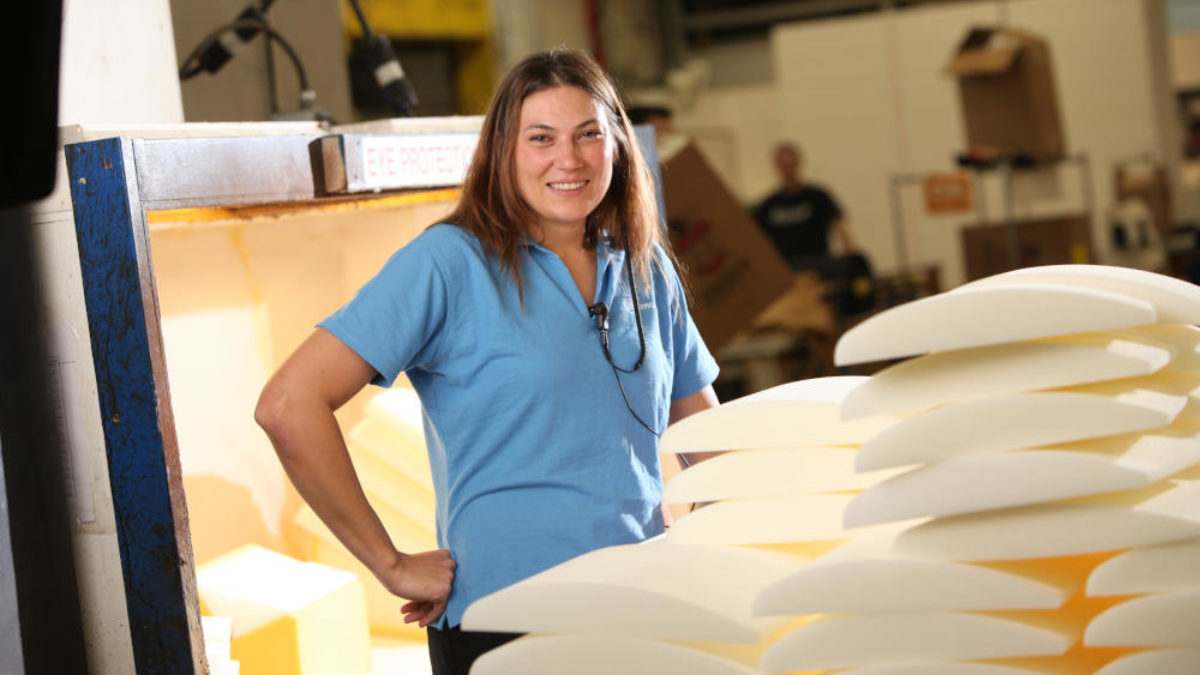High resiliency (HR) foams are used across multiple applications in many industries, most commonly in foam cushioning applications like mattresses, furniture, seating, etc. The material is a common substitute for traditionally used open-cell foams (e.g., “memory foam”), but it can also be used in conjunction with these types of foams, creating a hybrid foam that is useful in many products.
What is high resiliency foam made from? What are the pros and cons of using it? Find out more about the material and its applications.
What is High Resiliency Foam?
High resiliency foam is a type of open-cell foam that is made from a blend of polyurethanes. It weighs around 2.5 lbs. per cubic foot and has an average density between 2.5 and 2.8. This makes the material durable, supportive, and comfortable when used in cushioning applications.
High resiliency foams, like many open-cell foams, retain their shape well when put under pressure, allowing them to return to bounce back to their normal shape when the pressure is removed.
How Do High Resiliency and High-Density Foams Differ?
While high density foams and high resiliency foams are used in similar applications, particularly cushioning and mattresses, they are different types of foam with different strengths. High density foams range from extra soft to very firm. They are much more dense than high resiliency foams, which are softer and have more of a bounce, which means they can be used to support greater weights. High density foams will not compress as well as high resiliency foams, and they are often combined with lower density foams to achieve the right level of support, firmness, and comfort in their products.
The Advantages of High Resiliency Foams
- Highly durable
- Comfortable and supportive
- Can be cleaned and sterilized
- Resistant to bacteria, mold and mildew, and insects
- Non-allergenic
- Flame retardant
The Applications of High Resiliency Foams
- Commercial seating
- Boat cushions
- Mattresses
- Custom orthotics
- Chair and sofa cushions
- Packaging foam
- Pet bedding
- Athletic mats and protective padding
The Drawbacks of High Resiliency Foams
Like many foams of this type, high resiliency foams have a tendency to off-gas, so caution should be used when using them with products that can absorb odors, especially if the foam is being used for packaging, shipping, and storage purposes. High resiliency foams also do not hold an extensive amount of weight. Although they are viscoelastic and retain their shape well, they should not be used to store or transport heavy and bulky items unless they are combined with denser, closed-cell foam packaging.
At Amcon, we fabricate and customize high resiliency foams, allowing them to be used in any applicable application. For more information on our materials, or for a project quote, get in touch with our team today.


